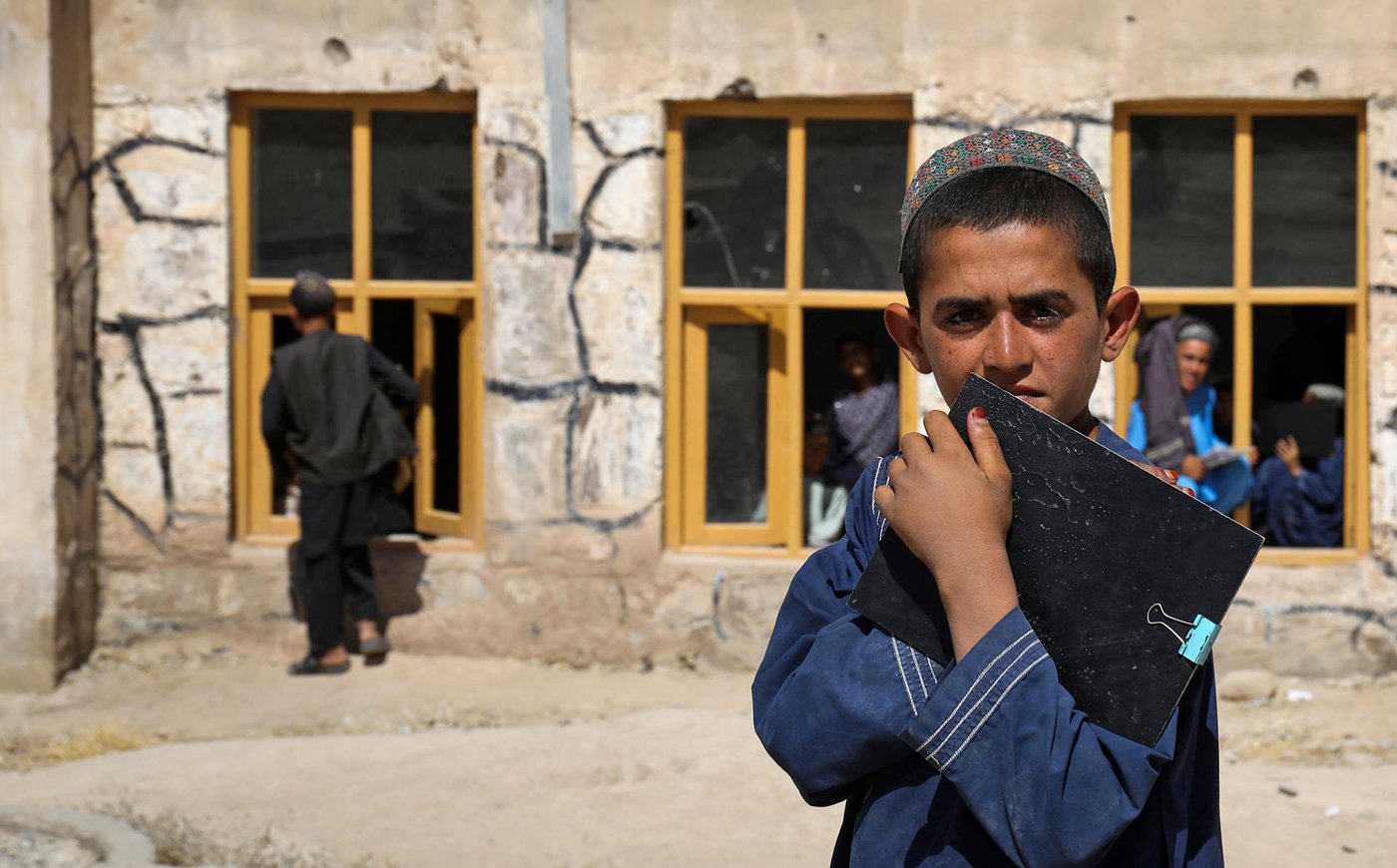The bell rings for the start of the school day. The cries and joyful screams of the children soon drown out the teacher’s admonitions. The scene resembles any other primary school, but the backdrop is very different.
AFGHANISTAN/Uruzgan: The schoolyard is surrounded by buildings without roofs, doors or windows. Onas Sarshakhli Primary School, outside the provincial capital of Tirin Kot in southern Afghanistan, is literally in ruins.
“Once, hundreds of children attended this school and still there are some 300 girls and boys gathering in the corridors to get an education. Sarshakhli village was taken over by the Taliban and they used this school as their base to fight against the Afghan military forces. Now, the front lines have shifted, and they have left, but the school remain the same. Thousands of girls and boys would have studied here if there was enough funding to rebuild the school,” says Turyalay Saheem, education coordinator with the Norwegian Refugee Council (NRC) in Afghanistan.
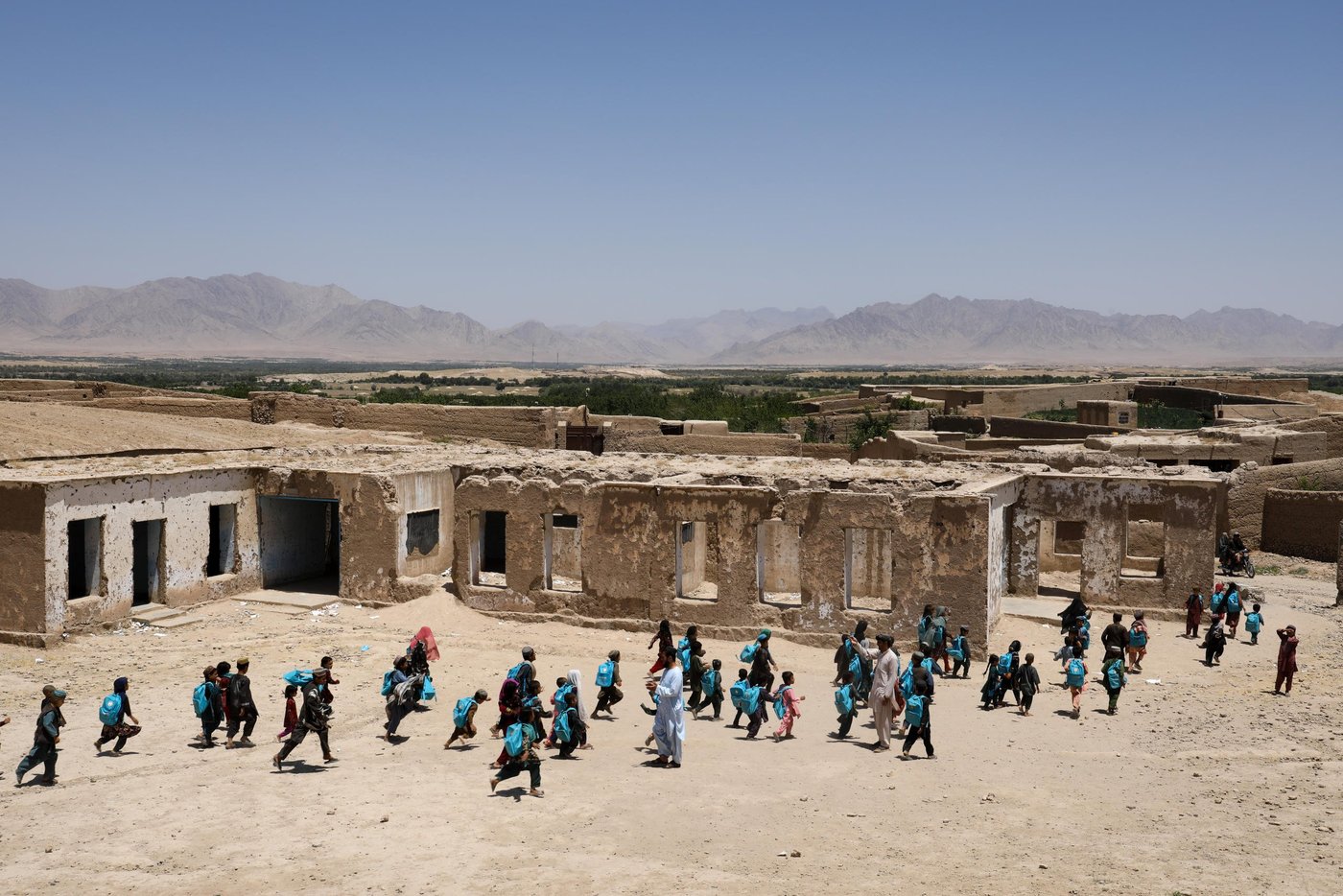
Nearly half of children are out of school
Education is key to Afghanistan’s future but is increasingly a casualty of the conflict. Despite tremendous gains in rebuilding the public education system – particularly for girls – since 2001, the number of boys and girls out of school is on the rise for the first time since 2002. An estimated 3.7 million children – nearly half of all school-aged children – are out of school.
“There is a great need for education funding, but resources are very limited,” explains Saheem. “In Uruzgan province, there are very few NGOs who are active, and they have little by way of resources or funding to support the rebuilding of schools. NRC is the only international organisation on the ground providing support and assistance to protect education.”
In Uruzgan province NRC is the only international organisation on the ground providing support and assistance to protect education.TURYALAY SAHEEM, education coordinator with the Norwegian Refugee Council
Lack of funding
Every day hundreds of children are forced to flee their homes due to insecurity and violence in Afghanistan, thus interrupting their education. Many displaced children are unable to enrol in schools due to lack of space, misconceptions surrounding the need for legal documentation, or the need to work in order to provide for their families.
“Humanitarian organisations like NRC provide temporary classrooms, teachers and learning materials to ensure that these displaced children can still receive an education. However, Education in Emergencies is one of the least funded programmes in Afghanistan, having received less than ten per cent of the funds that it needs for this year,” says Anthony Neal, NRC’s advocacy manager in Afghanistan.
NRC’s overall Education in Emergencies programme in Afghanistan is about 40 per cent funded.
“Annually we require about USD 3.2 million, and we will have about USD 1.3 million this year – not enough to cover all critical hard-to-reach areas. For Chora District in Uruzgan, we have nothing,” says Neal, and continues:
“For complementary ‘protection’ work, such as psychosocial support for boys and girls displaced by armed conflict, whom we are attempting to help reintegrate into education, we are only 20 per cent funded.”
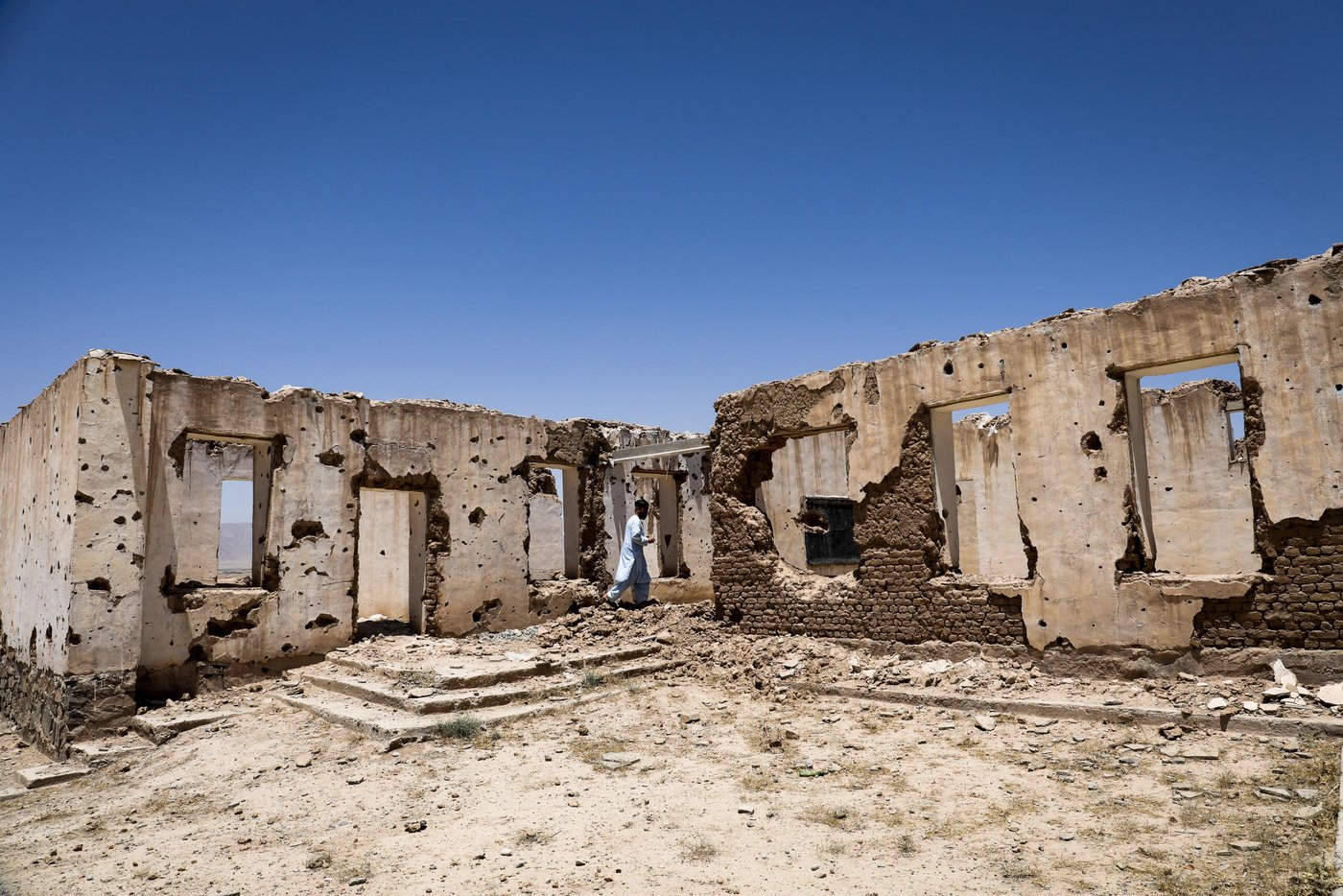
Attacks on schools
Schools, teachers and students are increasingly the target of attacks and intimidation. In 2018, approximately 700 schools were destroyed, damaged, occupied by armed groups or Afghan and international military forces, or closed due to the conflict – leaving more than 325,000 children without education.
“It is not uncommon to see schools being used as checkpoints and forward operating bases for armed forces,” says Neal. “This results in damage as fighting and clashes draw closer to the school buildings. As elections approach, we expect even more attacks on schools in the coming months – as many are used as polling centers. We have been advocating for the protection of education in Afghanistan for the past three years and we will continue to do so.”
It is not uncommon to see schools being used as checkpoints and forward operating bases for armed forces.ANTHONY NEAL, NRC’s advocacy manager in Afghanistan
A surveyed by NRC last year revealed that more than half of children didn’t feel safe at school. 12 per cent of children had experienced attacks on their schools, and many had missed exams or periods of schooling either because of threats from armed groups or because they or their parents believed the school would be targeted.
Read also how Armed men cut the throats of three school employees.
Uruzgan province in the southern part of Afghanistan is one of the areas that is heavily contested by parties to the conflict.
“For us to operate in Chora district we had to negotiate with both parties. Now that we have the green light, it would be good for our humanitarian access if we got funding to support some school activities,” Neal explains.
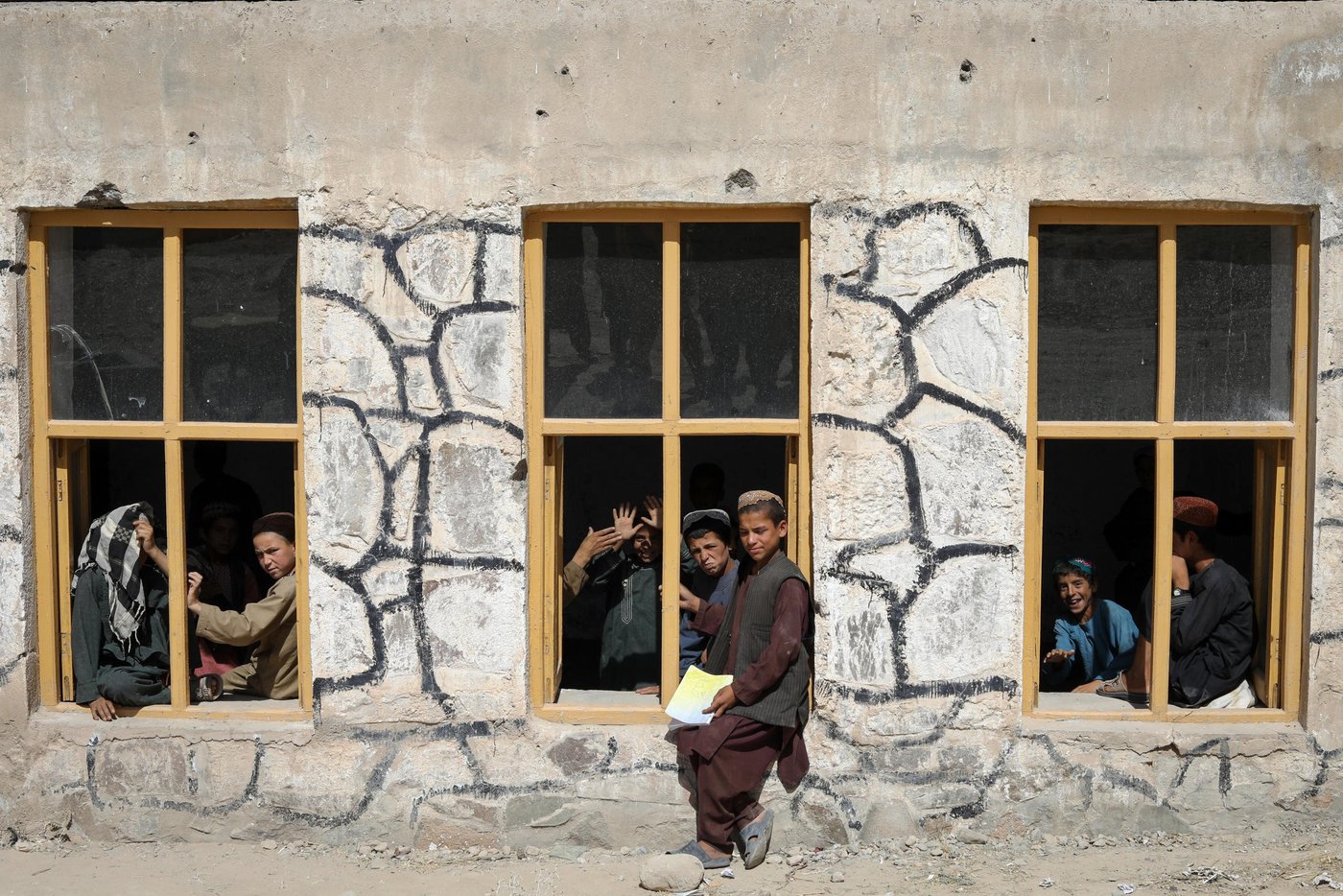
Reopening schools
In Charamgar, some five kilometres north of Tirin Kot, the secondary school was occupied and used as a checkpoint by the Taliban for almost six months in 2015–16. The school remained shut for the whole academic year. When the Taliban were pushed back and school resumed, all of the roofing, boundary walls and gates had been either destroyed or stolen.
NRC stepped forward and carried out some basic security upgrading to this and three other schools in and around Tirin Kot. The work included iron sheet roofing, new emergency gates, main gates, boundary walls, grill work, and window repair including new glass and blast films for the windows. NRC also established a school-based protection committee for each school, with the support and participation of the provincial education department and the community shura.
“We feel more safe and secure now after building the boundary walls and installing the gates. Now, we have a bigger yard and students can play inside the school building. The boundary is also safe from any attack and flying bullets,” says Nida Mohammad, the Charamgar school principal.
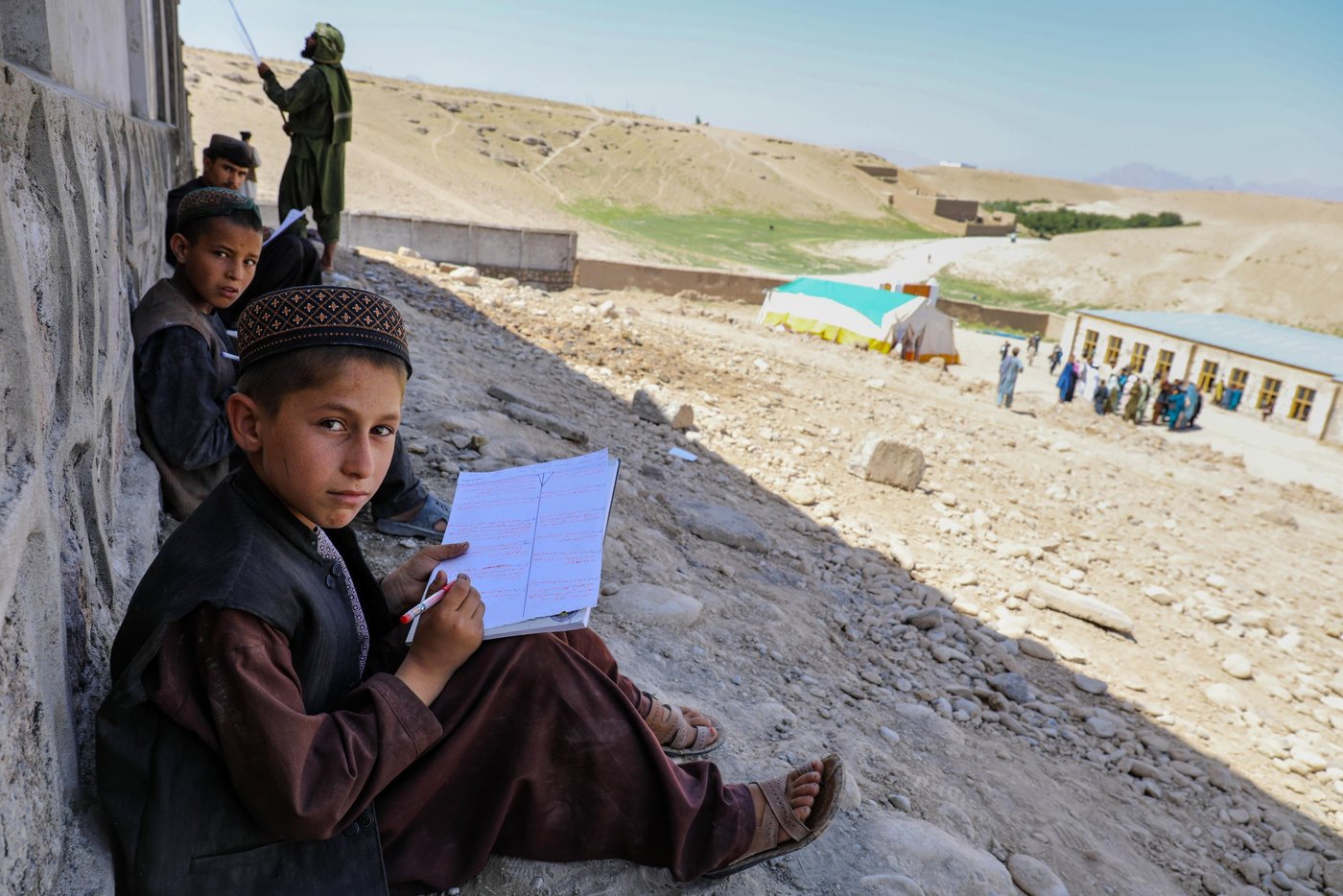
Girls are the biggest losers
Girls’ education is disproportionately affected by the conflict. 60 per cent of children out of school are girls who are often prevented or discouraged from attending due to the presence of security forces, the possibility of attacks and the lack of female teachers, as well as the lack of gender-specific facilities, especially toilets.
“Girls’ education has been hailed as one of few success stories of international support to Afghanistan, and progress was indeed made. But now, increasing numbers of girls are out of school not only because it is unsafe, but because the money dried up. This year, we had to shut down several school projects for displaced children simply because no-one could find a way to pay. To me, this shortfall is one of the most staggering examples of how the international community has broken its promise to Afghan girls,” says Neal.
NRC works hard to address these barriers by, for instance, building latrines in schools and advocating with armed groups to remove checkpoints and military barracks from school buildings in accordance with the Oslo Safe Schools Declaration.
Read also the story: If you're a 13-year-old living in Afghanistan


